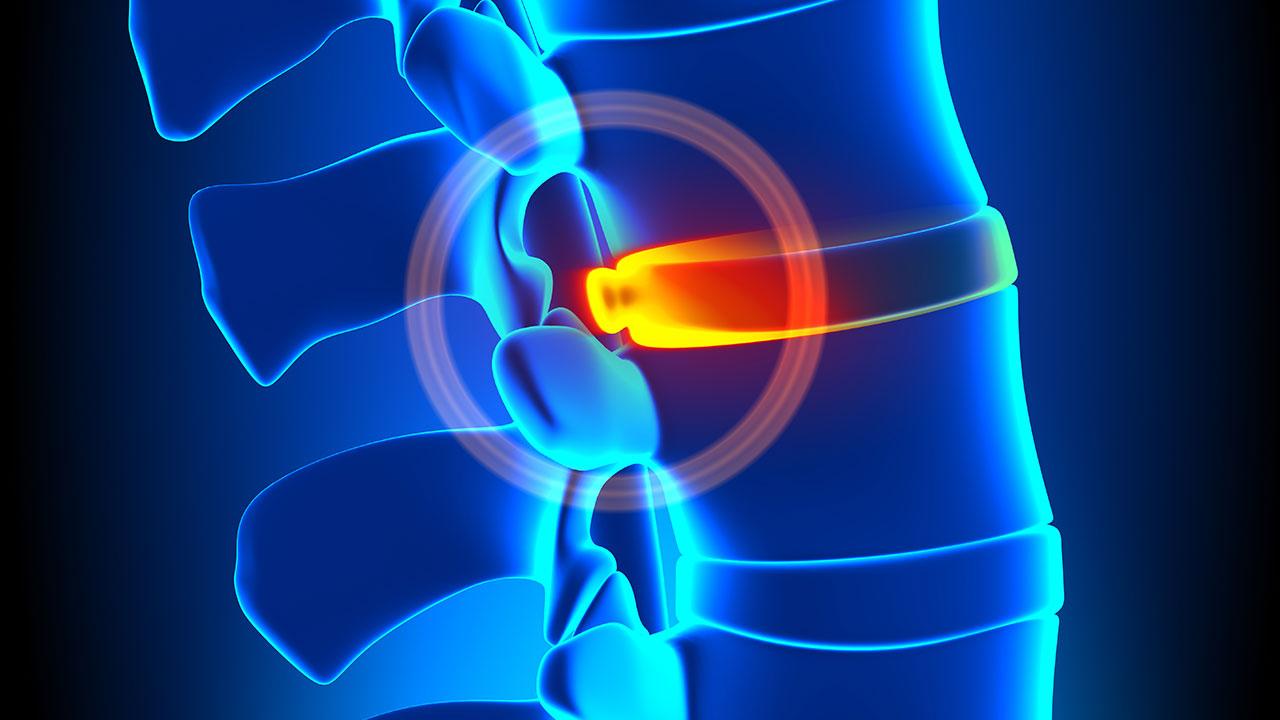There are twenty-three discs in your spine that serve as connectors, weight bearers, shock absorbers, and provide flexibility. Ideally, we want the discs throughout your spine to be level, allowing the vertebra above and below to be parallel with each other.
The disc is made up of two portions, the nucleus pulposus and the annulus fibrosus. (include visual of the disc labeling both). The nucleus pulposus is a gel-like material that serves as a pivotal ball bearing between one vertebra and another allowing spinal movement (bending forward, backwards, and side to side). Surrounding the nucleus is the annulus fibrosus, consisting of cartilage rings which adhere strongly to each adjacent spinal bone to keep the nucleus contained.
When there is trauma, the spinal vertebra misaligns and may cause disc damage. The shifted vertebra compresses the nucleus (center) of the disc forcing it against the annulus (outer rings). The fibers of the annulus become stretched and damaged causing an inflammatory reaction (pain). The inflamed and swollen disc can potentially irritate the nearby spinal cord or nerve roots; therefore, the surrounding muscles spasm to prevent excessive movement and further damage. For this reason, taking muscle relaxants and getting deep tissue massages provide temporary relief, but do not correct the problem. The muscles that surround the joint is a defensive mechanism that the body uses as a protective splint. When we remove the body’s natural protective mechanism, we leave the joint vulnerable to further injury by causing instability. Chiropractic is about finding the cause rather than chasing the symptoms. When a specific chiropractic adjustment is applied to the subluxated (misaligned) joint, naturally the muscles that surround it will relax because there is no reason to protect it anymore. Once this is done, therapeutic massages are important to help the surrounding tissues heal and restore themselves.
Trauma to the spine could be categorized as macrotrauma (a single incident) or microtrauma (cumulative effects and/or repeated minor episodes). Macrotrauma injury examples are slip and falls, sport injuries, and/or motor vehicle accidents. Whereas microtrauma may include repetitive wear and tear activities such as lifting, driving semi trucks, painting, sitting, etc.
If left uncorrected for an extended period of time and there is continued stress to the misaligned vertebra, the gel-like nucleus begins to seep into the fissures in the annulus. The chemical contents of the nucleus irritate the nearby nervous tissues, causing more pain because the fibers of the annulus are richly supplied with pain-sensing nerves. This is the reason why it is best to correct the subluxation (misalignment) BEFORE you feel pain, just like it is recommended to have dental check-ups even if you do not have a toothache. Chiropractic is similar to dentistry in many ways. Spinal tune-ups help to prevent more of the nucleus creeping into the annular fissures causing disc bulges, herniations, or possible ruptures of the discs. Over time, degeneration (bone spurs, loss of disc space) occurs in the spinal joint causing direct pressure on the spinal cord or nerve roots, affecting the function of other organ systems in our body.

